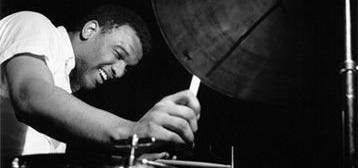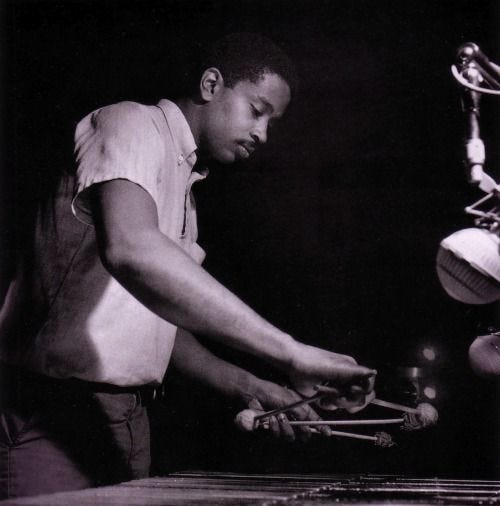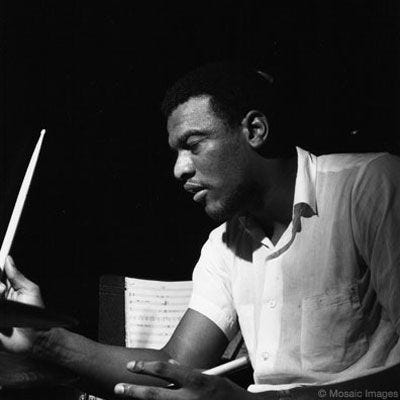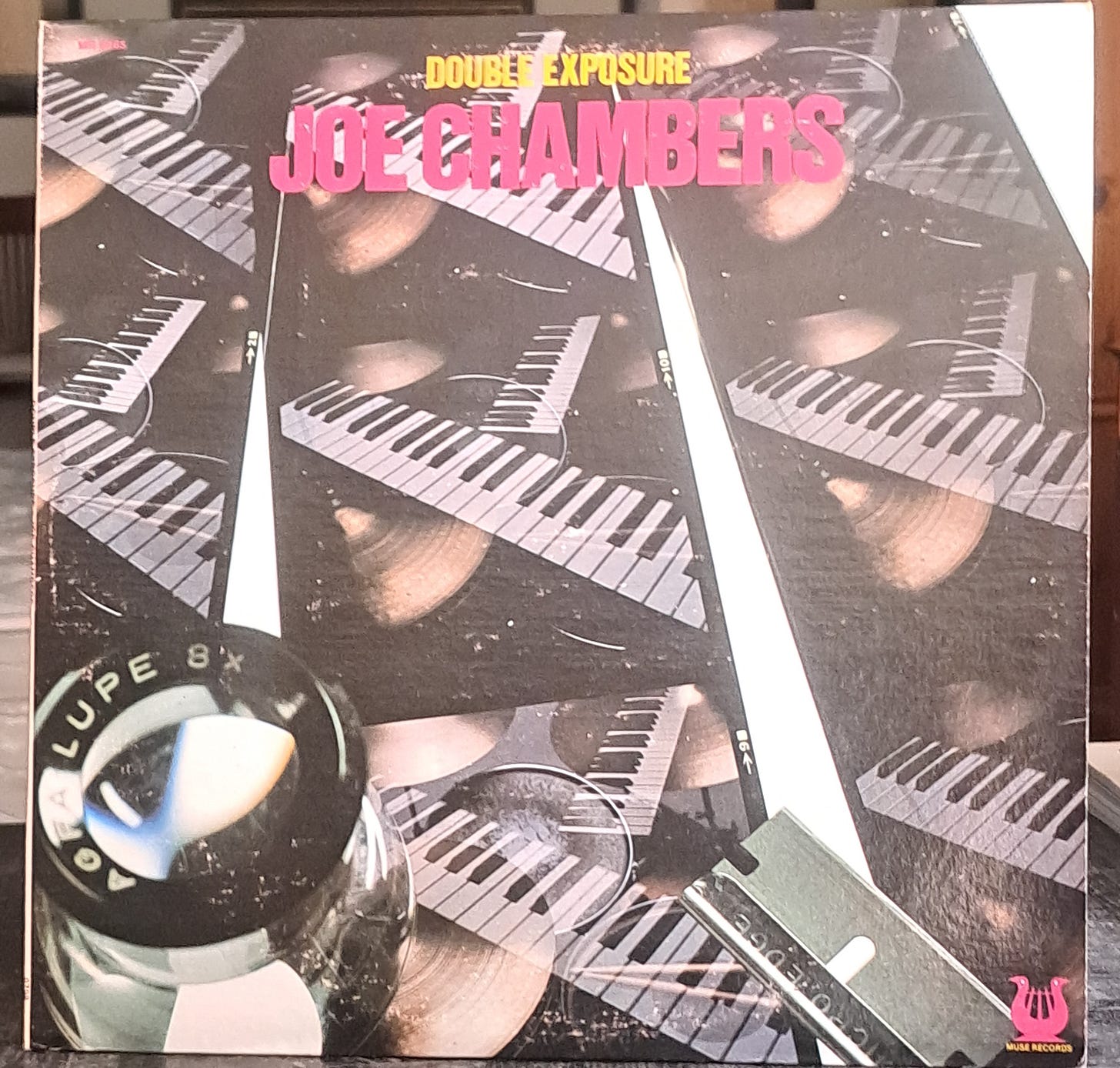Exploring the Harmonious Depths: Bobby Hutcherson's 'Oblique' and Joe Chambers' 'Double Exposure'
What’s up guys,
Remember a couple articles back when I said that I wasn’t going to write about Jazz on this blog? I lied. I’m going to write about a couple Jazz records today, Bobby Hutcherson’s Oblique and Joe Chamber’s Double Exposure. The more I’ve thought about it, the more I think it’s kind of dumb to impose those kinds of limitations on myself and what I write about. If my readers aren’t super interested in this type of music and the article flops, I’ll just write about something different next time. Really I write these article to talk about music that I’ve been listening to lately and when that’s Jazz I should write about Jazz. If some of my readers get some exposure to music that they otherwise wouldn’t have checked out, that can only be a good thing. If it alienates people who expected me to write about something else, too bad. Maybe you’ll like the next article more. I want this blog to be for music lovers of all stripes, and genrephobia is just not something that I stand for.
It would also be lame to force myself to write about Metal just because it usually does well for me on Substack. I’ll write about Metal again, when there’s something I want to write about. Honestly, since the Amebix/Winter article I haven’t really been listening to much Metal or Punk. In actual fact, the Joe Chambers record I’m going to be writing about has been my most listened to record throughout the Fall, and I considered writing about it last month. In actual fact, though I’ve sort of hit my stride by writing about Metal, the truth is Metal was something I was much more enthusiastic about in my late teens/early 20’s. My Metal articles haven’t really been written from the perspective of a lifer, whose super stoked about the state of current Metal or optimistic about the future of the genre. Someone who writes about Metal full time should be someone like that in my opinion. I’m not going to rehash what I’ve said in previous articles here, but they are written from the perspective of a jaded old head, who likes the old stuff but has been indifferent to almost everything after the 90’s. I like revisiting my go-to favourites but I don’t really enthusiastically keep up with new bands. When I hear things I like I’ll write about them, but I only write one article a month, and I don’t want it to be about something I’m not actually stoked about.
What I actually mostly listen to these days is Jazz, 90’s Hip-Hop and Dub. These are more what influence my own music. And they have been just as influential on me as Punk and Metal have been. So I have just as much to say about them as I do the heavy stuff. Of course from a branding perspective it would be better to just cater to one niche, but that just seems really boring and one dimensional to me. This is more like a personal fanzine than like a professional publication, so I’ll just write about whatever I want, and see how things go.
Before getting into these records I’m going to do a little studio update/talk about my own music for a bit. Some of you might have noticed (probably not too many of you) that I’ve been incorporating more Saxophone into my music lately.
Yeah, those aren’t samples from records, that’s me sampling myself. It will take me time to really develop a good tone again, and good intonation on Alto Sax is more like a skill that’s developed over years, than it is with guitar. But I can still read the sheet music and learn the tunes, and record multiple takes and make decent samples, so I don’t have to pull from other peoples records. I sometimes use vocal samples, that’s something I want to do more of, but other than that the music is all me. I can also improvise little lines based on the chord changes of the tune and incorporate those into the music. My approach is somewhat like a hip-hop producer I guess, I just record my own samples, instead of using records as my source material. Including real acoustic instrumentation makes the music sound more jazzy and less videogamey as well, which is what I wanted.
This has been my first foray into recording acoustic instruments and working with microphones and all that, which also presents a learning curve. But I’ve been experimenting, trying different things, learn what works and what doesn’t. The cool thing about my recording set-up is you can turn anything into an instrument with a microphone, some effect pedals and a sampler. For example, the bass on my version of Autumn in New York is a vocal sample of me saying “ohhhhm”. I put a low pass filter on that, and reduced the bit rate to distort it, and this is how it came out.
The music I upload on youtube is not to be considered “complete” exactly. They are more like early demo’s, and an honest document of where I’m at. Truth is I would never go back and listen to anything if I didn’t upload them to youtube. Giving them repeated listens allows me to think about what I’m doing well, what needs work and what idea’s simply don’t work. In 2025 I’ll likely do take 2’s of a lot of these tunes. Point is I’m still kind of just trying things out and experimenting, learning through trial and error. Some of the tunes are better than other’s, some things I try doing don’t really work and should be discarded. It takes time to really get good at things, and I’m pretty happy with where I’m at after one year of making beats. I’ll start to upload my music on other platforms when I feel more confident in my own material. I still feel like I’m in the process of becoming what I’m going to be musically, and my beats aren’t really up to my own standards yet. But they are improving and that’s good.
And yeah, Na$ty Nate beats are my own creations, Mostro Space Jazz is Jazz standards, in case anyone was confused about that.
Alright, let’s get into the records.
We’re gonna start with Oblique by Bobby Hutcherson on Vibes, accompanied by Herbie Hancock on Piano, Joe Chambers on Drums and Albert Stinson on Bass. Recorded in 1967 and released on Blue Note.
Now, I’m going to assume that most BM readers do not really listen to much Jazz. And for new jazz listeners I think seeing this music in a live setting is actually preferable to listening to recordings. It really does help to actually see this music being performed to build an appreciation for it. They make it sound easy but the skill required to play this music well can only be fully appreciated by actually seeing the musicians play it. I don’t expect most of you to run out to a Jazz club just because I told you to (you should if there’s a decent one in your area) but for the purposes of this article youtube will suffice. Here’s Bobby Hutcherson in Bolgona, Italy in 1977. He’s playing with a different band than on this record but you’ll get the idea.
Hutcherson was inspired to take up the Vibraphone at 12 when he heard Milt Jackson play Bemsha Swing on the Miles Davis All Stars album in 1954. Prior to this he had been trained in piano and drums and vibes presented the perfect middle ground between these two disciplines. By the time of this recording, Hutcherson had already made a bit of a name for himself appearing on Eric Dolphy’s Out to Lunch and Jackie McLeans One Step Beyond and Destination Out, and had even recorded two albums already as band leader called Dialogue and Components. So while young on this recording he has already attained quite a bit of notoriety.
The history of the Vibraphone and it’s importance in Jazz is actually worth going off on a side tangent about.
Prior to being popularized in Jazz by Lionel Hampton in the 30’s, the Vibraphone, like the Theremin which I discussed in the Italian Horror Synth article, was seen as something of a novelty instrument. It was mostly heard in vaudeville orchestra situations or in the soundtracks of cheesy b movies. A Vibraphone is like a Xylaphone in that you strike metallic bars with mallets and each bar plays a corresponding note as with a piano. The Vibraphone is unique in that through the usage of motorized fans it produces a Vibrato effect, that sounds pretty spaced out and at the time futuristic, which is why it ended up in so many b movies initially. Like the Saxophone, it was really in Jazz that the instrument began to be taken seriously and the sound of the Vibraphone began to take on a less novel quality and took on a more sophisticated and stylish air.
Of course Jazz itself was initially seen as somewhat of a novelty music, and only really began to be regarded as serious art music in the 50’s, due in part to Milt Jackson and the Modern Jazz Quartet who sought to elevate Jazz, so vibes and jazz kind of helped legitimize each other in certain ways.
Still, when I see a Jazz record has a Vibraphonist on it, it’s always a bit of a treat. It’s definitely not the most common instrument in Jazz, and the records that do feature it really stand out from the rest. Oblique, is no exception.
The album opens things up with a cool, mid-paced, Latin flavoured tune, composed by Hutcherson called Til Then. Catchy tune, excellent musicianship, get’s things off to a good start and set’s the mood well
Next up, is My Joy, features Hancock’s key’s prominently in the main melody, with Hutcherson accompanying harmonically on the vibes. Features solo’s by Hutcherson, Hancock and Stinson on bass.
Side A closes out with the Theme from Blow Up. A great film, directed by Michelangelo Antonioni. The soundtrack of which was composed by Herbie Hancock. This is the only attempt to play the score in this type of straight up Jazz setting the original being much more rock n roll inspired. Worth hearing for fans of the film for sure. The original followed by the Hutcherson version.
Side A of this record is great and features stellar musicianship from everyone involved, but honestly side B and especially the final two tracks, Oblique and Bi-Sectional are really why I wanted to write about this album. Both tunes were composed by Joe Chambers.
But first, we’ve got one more from Hutcherson, Subtle Neptune, another Latin flavoured Jazz number, with Samba rhythms. The first four tracks on this album are all great. These are all original tunes, very modern sounding but all routed in the blues and the Jazz traditions. There are a lot of Latin Rhythms in these songs, but Latin jazz was fairly trendy in the 60’s and this was not uncommon. Not that I’m complaining mind you, Latin Jazz is of course wonderful. What I’m saying is while these songs are great, and I thoroughly enjoy them, they are also quite accessible, and honestly there were much more far out Jazz records being made in 1967. Free Jazz is in full swing at this point and Andrew Hill’s Compulsion (also featuring Chambers on Drums), Coltrane’s Kulu Se Mama and Don Cherry’s Symphony for Improvisers all came out this same year. The final two tracks, composed by Joe Chambers, take a turn towards the avant-garde.
Probably my favourite track on this record is the first of Chambers tunes, the title track Oblique.
This is the first song on the album that really rips. The one’s preceding it are cool, and chill, more casual Jazz fans would probably be able to vibe to them. Oblique is much more aggressive, at times atonal and rhythmically complex. Climaxing with Chambers polyrhythmic drum solo. This is followed by Bi-Sectional, a more subdued and loose number, but no less complex and intricately performed, with improvised counterpoint between the performers. Rather than me explain what’s going on poorly I’ll let Chambers himself describe his work with Hutcherson. From an interview with Nat Hentoff:
”What I’m working more and more in is a fusion of free counterpoint and complex rhythm patterns that will create a sound - a core - around which each part will rotate. And with no definite rhythm…. It’s time that’s felt collectively…. Bobby knows how to accompany. He plays behind other musicians better than anyone I’ve ever heard. And in addition to his facility, he knows how to use the vibes orchestrally. Also, he’s superb in terms of creating and sustaining atmospheric passages. And of particular importance to my writing, Bobby knows exactly what to do to be an independent voice. He has the capacity to keep going in his own direction, while never losing his rapport with the other voices. Another thing about Bobby is that he knows tradition and is part of it. In his playing, you can hear what’s gone before him. He can play the blues and he can also go places no one’s ever been before.”
I’m going to come back to the last thing he say’s about tradition in the conclusion of the article.
Anyways, great record. Would serve as a gateway drug from Post-Bop to more avant-garde styles. With one foot planted in tradition and the other in the future. Herbie Hancock would go on to become much more famous for his Jazz Fusion works of the 70’s and onward, that would be immensely influential on hip-hop, techno and house music among other things, but this is very much a post-bop record, that enters avant-garde territory in the final two tracks. It never really get’s into Jazz fusion or incorporating influences from outside of Jazz.
Also, sorry for not talking much about Albert Stinson, on the bass in this review. His playing is good here, I just don’t know much about him except what’s on this record. He’s only been credited for playing on one other record, a Joe Pass one also on Blue Note, and apparently died young of a drug overdose. Sad, but many such cases. He play’s well on this record anyways.
edit: he played a bunch with Chico Hamilton and many other high profile people in his time. See his wikipedia article for details.
Alright, the second record for this month is going to be Joe Chamber’s Double Exposure, featuring Larry Young on Organ. Recorded in 1977 for Muse Records.
So, as you can see from the last review, I was quite taken by Joe Chambers compositions on Bobby Hutcherson’s Oblique, and I wanted to hear more music like that so I picked up this record with the Organist Larry Young, and I’m glad I did because it’s pretty awesome.
Joe Chambers is a unique talent as there are not too many drummer/composers in Jazz that I can think of. There’s Max Roach, but it’s pretty rare. This record he’s not playing drums though, this is his recorded debut on the Piano, so this album is essentially a piano/organ duet with Larry Young.
Some background on Larry Young. He got his start in the early 60’s playing with guys like Grant Green. Also a few notable albums with himself as band leader on Blue Note, playing with the likes of Joe Henderson, Tony Williams, Woody Shaw to name a few. In 1970 he played on Miles Davis Bitches Brew and went down the whole Fusion rabbit hole. So his roots are in Jazz but he does get into rock and roll, soul and funk territory in the 70’s. Here he is performing in 1971 with Tony Williams Lifetime.
The album opens with Hello to the Wind, with Chambers on Piano and and Young on Organ. It is clear that Chambers is a very skilled pianist and his approach to the instrument is very harmonically rich and emotive. He has mentioned in interviews he did actually start out as a piano player and it definitely shows. This is followed by the Orge which see’s Chambers add tabla and some cymbal work to the piano/organ mix while Young doubles on synths. Side A closes with Mind Rain, which has become the most famous track on the album, probably the most famous in Chambers repertoire, mainly because a piano line from the track was sampled by DJ Premier on the Nas classic New York State of Mind.
Here’s Chambers talking about the Nas track.
Side B opens up with After the Rain. This song picks up right where Mind Rain left off. Young sits this one out and Chambers carries this one solo on the piano. To be honest this feels like the proper conclusion of the album to me. The first four tracks flow so well into and out of each other, and create a certain mood and feeling, that the final two tracks really don’t even try and carry forward. They feel like bonus tracks added on at the end of the album. Not that they’re bad at all, far from it, but Hello to the Wind, The Orge, Mind Rain and After the Rain almost feel like separate movements in part of a larger work, while the final two tracks don’t feel like part of the same work to me. It feels like bonus material.
First we have Message From Mars, a more upbeat rock infused number with Young on Organ and Chambers back on the Drums. And the album closes out with Rock Pile a more rock infused rendition of Mind Rain.
I think there are a few notable differences between the Jazz of the 60’s as seen on Oblique and the Jazz of the 70’s as seen on Double Exposure. Going back to what Chambers said earlier about Hutcherson’s playing being rooted in the blues and firmly in the jazz tradition, while wanting to bring the genre to new plateau’s and places it had not been before. Oblique feels like it’s very much within the Jazz tradition, while I would not argue that Double Exposure falls outside of it, it is clear that by the 70’s Jazz is looking for and finding inspiration from outside of what has traditionally been considered part of Jazz. There are synthesizers and electronic elements on the record, there are rock and funk inspired tunes. This is clearly Jazz informed by recent developments in Jazz fusion. There were a lot of Jazz purists who of course hated Jazz fusion, they saw it as Jazz going through an identity crisis, people like Miles Davis and Herbie Hancock as selling out, appealing to popular trends and abandoning their roots and so on, and I can definently appreciate that perspective, and to be honest there probably was some of that going on and motivating a lot of the older guys grasping for relevance by adopting newer more popular styles, but I also think younger guys like Larry Young and Tony Williams were just growing up in a different world than the one Miles Davis had grown up in. Their playing was just being inspired by more modern styles, which influenced their playing. To an extent guys like Miles Davis adopting this style in the 70’s could be seen as the older generation passing the torch on to the younger generation, and giving them the freedom to be innovative and inventive in their own time. Jazz is supposed to be about spontaneity and change, and reinvention and reimagining of the established norms of the genre should always be celebrated right?
I’m not sure it really works like that either. I mean, I’m not a Jazz purist at all, and I do like a lot of Jazz Fusion, and mixing Jazz with other more contemporary styles. I would say Jazz Fusion is basically the genre of my own music. But to me Jazz as an art form kind of piqued in the 60’s with Free Jazz and the Avant-Garde. The Fusion era marks the end of the Jazz era for me. Like Jazz, as an evolving, living style. Not to say there aren’t good records, or people who play Jazz exceptionally well anymore, but it’s become an established style, and hasn’t really been innovative in a long time. Though Joe Chambers doesn’t enjoy the same kind of recognition as a John Coltrane, I would place him in the same category, as representing a sort of peak or plateau, that Jazz as a style can’t really go past, while continuing to be Jazz. After that point it ceases to be Jazz and starts being something else. If you follow the careers of some of the people I’ve written about in this article, like Herbie Hancock especially, you see a lineage from Jazz to Fusion to Funk to Disco to Hip-Hop. The death or conclusion of one style gives birth to new ones and makes new things possible. There’s a place for puritanism and keeping the torches lit, I suppose, but I’ve always respected those artists who were innovative and kicked down those established doors of acceptability, and helped pave the way for new things.
I love this album, but is it really Jazz? or Funk? or Proto-Hip-Hop? All of the above?Open question I guess.
It feel’s like Hip-Hop is going through it’s Fusion stage now with fusion microgenres like Emo Rap or Trap Metal or Country Rap coming and going every other week or things that are not really part of what has traditionally been considered hip-hop culture being fused into it. If Hip-Hop is dead I wonder what will come next. Time will tell I guess. To paraphrase Gramsci, the old world is dying, new one struggles to be born, now is time of monsters, blah blah blah.
Anyways, like I said in the intro, Double Exposure has been easily my most listened to record all Fall. I’ve listened to it at least 3 times a week since picking it up, and I simply can’t get enough of it. Don’t sleep on it, cuz sleep is the cousin of death… Anyways, I’ll put together a mixtape for paid subs (the cool kids) inspired by this article. Should drop in two weeks. There’s gonna be Vibraphones, Organs, Post-Bop, Fusion, Free Jazz and DJ Premier. Till then keep Christ in Christmas, Happy New Year, party responsibly and all that good stuff. Salut.










I wouldn't worry about your reader's genre concerns. People being real know jazz is very metal.
Gio this is manydog you still got a telegram to chat or you only doing substack now